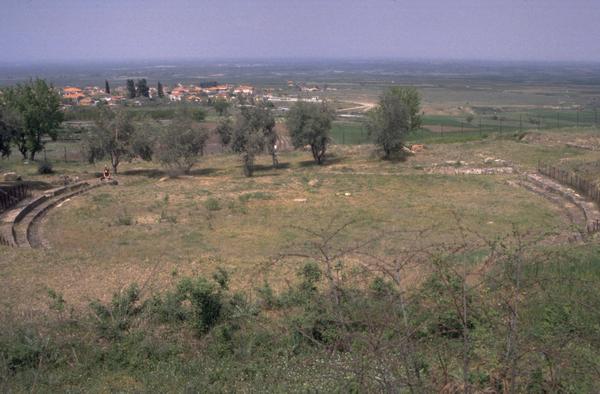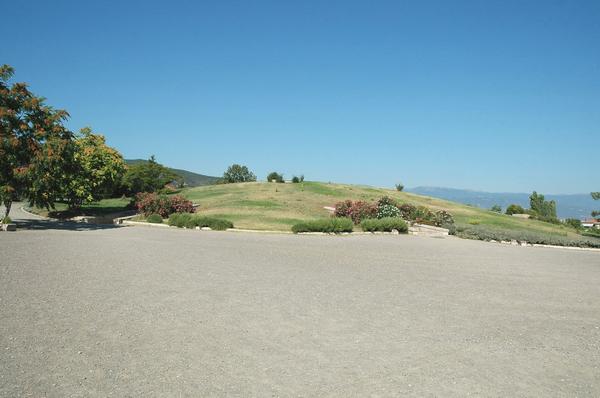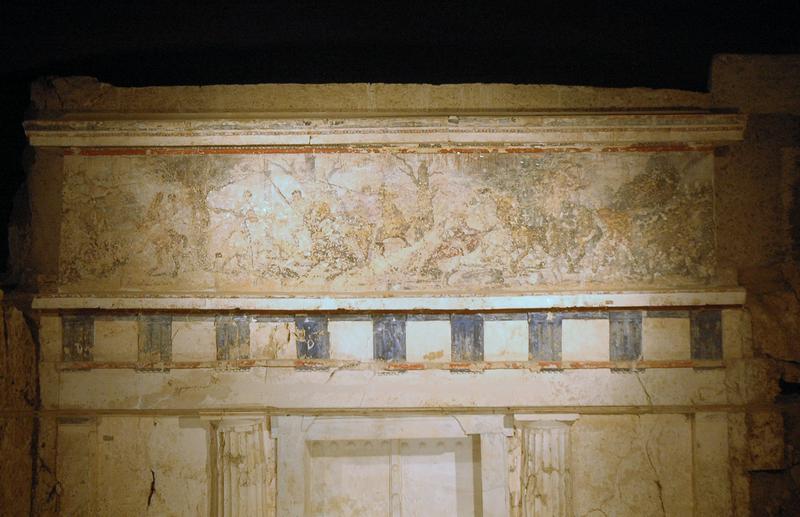Aegae (Vergina)
Q16963755Aegae: ancient capital of Macedonia, site of the royal cemetery.

Aegae was the old capital of Macedonia and always remained an important place, even after king Archelaus had replaced it at the end of the fifth century as his residence by Pella. However, the town still boasted a palace and a theater. In 336 BCE, this was the place where king Philip II was assassinated and his son Alexander proclaimed king (text). Aegae also remained the place where the Macedonian kings were laid to rest.

Two of these tombs were discovered in 1977. The identification of the dead is not absolutely certain, but the common opinion among Greek archaeologists is that they are Philip II and Alexander IV (son of Alexander the Great). The second identification remains uncontested.
However, the first one is not without criticism. It is essentially based on research by Jonathan Musgrave, John Prag, and Richard Neave, who thought they could identify certain features of the skull with Philip's wounds, which are mentioned in written sources. However, anthropologist Antonis Bartsiokas has pointed out that the features mentioned by his colleagues are normal anatomical quirks, while Philip's broken collar bone - which ought to be visible - cannot be found among the Vergina bones. Moreover, the skeleton in Vergina better suits a cremation of a body that has already been buried for some time (and has dried out) - something we know has happened to the body of Alexander's successor Philip III Arridaeus. So, perhaps, the men buried in Vergina are Alexander's half-brother and son.

The painting above the entrance of the Tomb of Philip (II or III) is interesting because one of the animals that the hunters are aiming for is a lion, and the lion hunt is an oriental artistic theme that we would expect after Alexander's conquests, and not on the tomb of his predecessor. This is another reason why the tomb may, after all, not be the final resting place of Philip II; is it Alexander's brother Philip III Arridaeus? On the other hand, there are more wild beasts on the fresco, so we must perhaps not overstress this point.
The central scene of the fresco above the entrance shows a young man on a dark horse, taking aim with his spear. If this tomb was made for Philip II, this must be his crown prince and successor, Alexander: if so, this is the oldest surviving portrait of the great conqueror, and the horse may be his favorite stallion Bucephalus. On the other hand, scenes like these were often mythological in nature and may not represent real people at all. What is certain, is that these frescos are splendid - although they are now very pale and you may need a reconstruction to get a good idea.

Literature
- Olga Palagia, "Hephaestion's Pyre and the Royal Hunt of Alexander" in: Bosworth/Baynham, Alexander the Great in Fact and Fiction (1999)